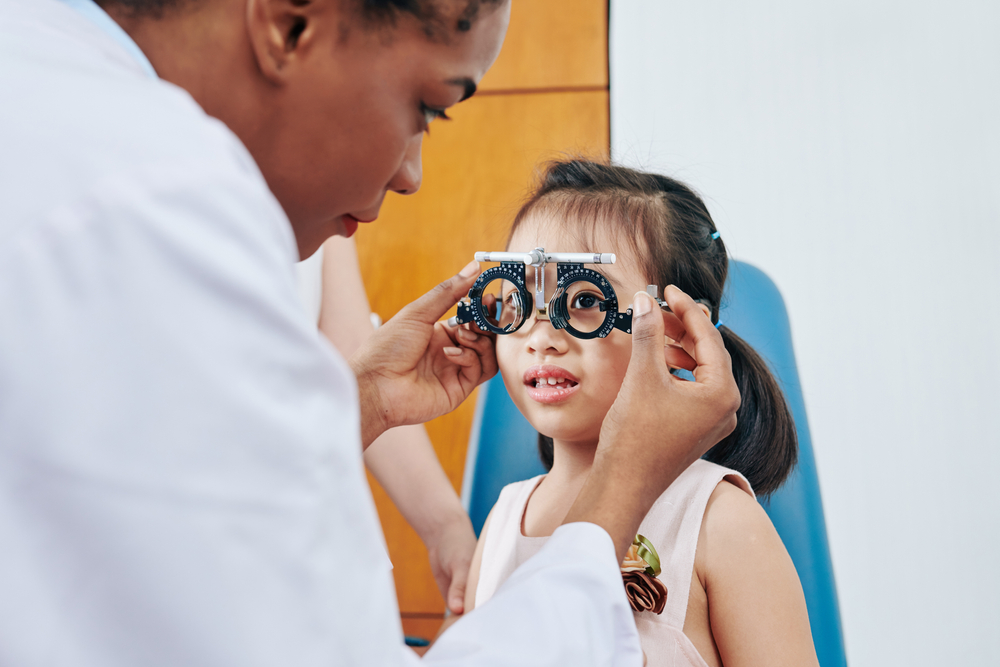
Myopia, commonly known as nearsightedness, is becoming increasingly prevalent among children. As digital devices become more ingrained in daily life and children spend more time indoors, the rates of myopia continue to rise. Understanding this condition and taking proactive steps can help protect your child’s vision for the long term.
What Is Myopia?
Myopia is a refractive error that causes distant objects to appear blurry while close objects remain clear. This occurs when the eye grows too long or the cornea is too curved, preventing light from properly focusing on the retina. Myopia often develops in childhood and tends to worsen as children grow.
Common Causes of Myopia in Children
Several factors contribute to the development of myopia, including:
Genetics: If one or both parents have myopia, there is an increased likelihood that their child will develop it as well.
Environmental Factors: Prolonged near-work activities, such as reading, using digital devices, and doing homework, may contribute to myopia progression.
Lack of Outdoor Time: Studies suggest that children who spend less time outdoors are at a higher risk of developing myopia. Natural daylight and looking at distant objects play a role in healthy eye development.
Recognizing the Signs of Myopia in Children
Early detection is key to managing myopia effectively. Some signs to watch for include:
Squinting to see objects at a distance
Sitting too close to the TV or holding books close to the face
Complaints of blurry vision, particularly when looking at the board in school
Frequent eye rubbing or headaches
Difficulty concentrating in class due to poor distance vision
The Importance of Regular Eye Exams
Children’s vision can change rapidly, and they may not always recognize or communicate vision problems. Routine eye exams allow for early detection and management of myopia before it significantly impacts daily activities and academic performance. Pediatric eye exams are essential for monitoring eye health and ensuring children have the visual clarity needed for learning and play.
Managing Myopia in Children
Although myopia cannot be reversed, several strategies can help manage its progression and reduce its impact on daily life. Prescription glasses or contact lenses can correct blurred distance vision and ensure clear sight for school and activities.
Spending at least 90 minutes outdoors daily has been shown to slow the progression of myopia. Exposure to natural light and engaging in activities that require distance vision can support healthy eye development.
Excessive screen time and prolonged near work can contribute to eye strain and myopia progression. Encourage your child to take breaks using the 20-20-20 rule—every 20 minutes, look at something 20 feet away for at least 20 seconds. Setting limits on screen time and promoting outdoor play can make a significant difference.
Schedule Your Child’s Eye Exam with Bird’s Eye View League City Today
Pediatric myopia is a growing concern, but with early detection and proper management, children can maintain clear vision and reduce the risk of long-term complications. At Bird’s Eye View League City, we care about providing kid-friendly eye care to ensure children feel comfortable during their visits.
If your child is showing signs of myopia, schedule a comprehensive pediatric eye exam with Bird’s Eye View League City for personalized myopia management solutions to support your child’s visual health. Visit our office in League City, Texas, or call (713) 944-4182 to book an appointment today.










